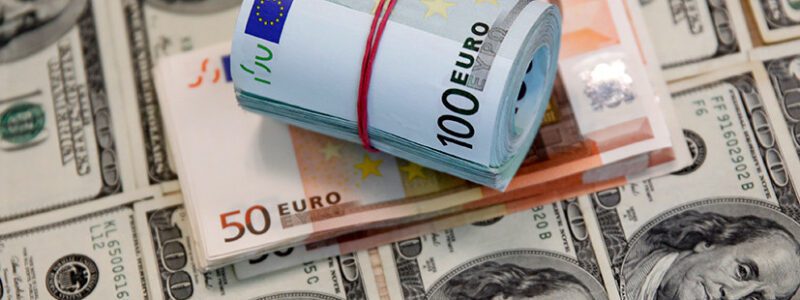
The U.S. dollar is moderately rising against the euro and Japanese yen in Tuesday’s trading, while the Australian dollar is rising on the outcome of the country’s central bank meeting.
The euro is trading at $1.0487 as of 7:50 a.m. Tuesday, up from $1.0493 at the close of the previous session.
The dollar traded up to 136.97 yen against the Japanese currency, compared to 136.79 yen at the close of the previous session.
The ICE index showing the trend of the dollar against six currencies (euro, Swiss franc, yen, Canadian dollar, British pound and Swedish krone) added 0.08%.
The pound fell to $1.2189 from $1.2192 at the close of trading on Monday.
The U.S. data published the day before, which bolstered the dollar, reinforced fears that the U.S. Federal Reserve (Fed) will need to raise interest rates for a longer period than expected, writes Trading Economics.
The U.S. Services Business Activity Index unexpectedly rose to 56.5 points in November from 54.4 points a month earlier, data from the U.S. Institute for Supply Management showed. The average forecast of analysts polled by Trading Economics had expected the index to fall to 53.3 points last month. A reading above 50 points showed an increase in business activity in the service sector, while a lower reading showed it was weakening.
The Australian dollar traded at $0.6727 on Tuesday, up from $0.6699 at the close of the previous session.
The Reserve Bank of Australia (RBA) on Tuesday raised its key interest rate by 25 basis points (bps) to 3.1 percent a year at the end of its final meeting of the year. This coincided with the forecast of most analysts, reports Trading Economics.
The Central Bank has raised the rate for the eighth time in a row. Thus, the cost of borrowing rose to its highest level since November 2012. At the same time, the RBA management signaled a further rate hike to curb inflation, which remains at a high level.
The euro traded at $1.0487 as of 7:50 a.m. Tuesday, up from $1.0493 at the close of the previous session.
The dollar traded up to 136.97 yen against the Japanese currency, up from 136.79 yen at the close of the previous session.
The ICE index showing the trend of the dollar against six currencies (euro, Swiss franc, yen, Canadian dollar, British pound and Swedish krone) is showing 0.08% growth, while the broader WSJ Dollar Index added 0.06%.
The pound fell to $1.2189 from $1.2192 at the close of trading on Monday.
The U.S. data published the day before, which bolstered the dollar, reinforced fears that the U.S. Federal Reserve (Fed) will need to raise interest rates for a longer period than expected, writes Trading Economics.
The U.S. Services Business Activity Index unexpectedly rose to 56.5 points in November from 54.4 points a month earlier, data from the U.S. Institute for Supply Management showed. The average forecast of analysts polled by Trading Economics had expected the index to fall to 53.3 points last month. A reading above 50 points showed an increase in business activity in the service sector, while a lower reading showed it was weakening.
The Australian dollar traded at $0.6727 on Tuesday, up from $0.6699 at the close of the previous session.
The Reserve Bank of Australia (RBA) on Tuesday raised its key interest rate by 25 basis points (bps) to 3.1 percent a year at the end of its final meeting of the year. This coincided with the forecast of most analysts, reports Trading Economics.
The Central Bank has raised the rate for the eighth time in a row. Thus, the cost of borrowing rose to its highest level since November 2012. At the same time, the RBA management signaled a further rate hike to curb inflation, which remains at a high level.